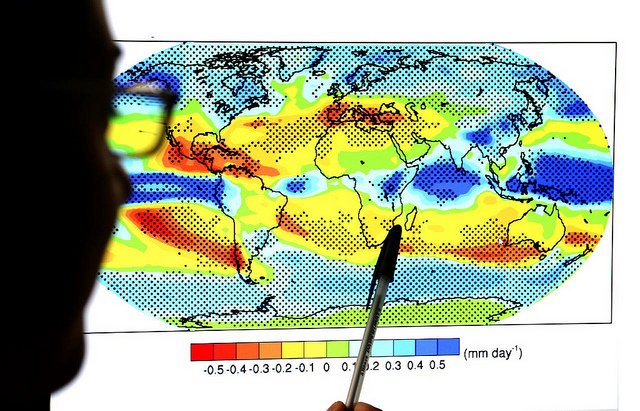Much is still uncertain about the potential effects of climate change on agriculture, leading to widespread uncertainty surrounding the future of global food security. Leaving hunger to chance is not a plan anyone embraces, but how can people prepare for what they cannot predict?
Cue the world’s leading agricultural economic modeling teams, who simulate varying future scenarios for crop yields and other agricultural outputs based on current data. In a multi-year collaboration under the Agricultural Model Intercomparison and Improvement Project (AgMIP) and the Inter-Sectoral Impact Model Intercomparison Project (ISI-MIP), nine pre-eminent modeling teams shared and compared their predictions for global agriculture under various climate change scenarios. IFPRI’s contribution built on its work for the Global Futures for Agriculture project, funded by the Bill & Melinda Gates Foundation and the CGIAR Research Program on Climate Change, Agriculture and Food Security (CCAFS).
Findings from the modeling comparisons— recently published online in a special feature of the Proceedings of the National Academy of Sciences — indicate a difficult road ahead for agriculture, but not an unmanageable one. By comparing various climate forecasts for the year 2050, researchers identified the following outcomes.
* A 17 percent decline in crop yields. This represents the average direct effect of climate change on crop agriculture, but there are significant differences by crop, region, and crop and climate models.
* An 11 percent decline in crop yields, accounting for farmers’ responses to climate change. Some of the responses addressed include altering input use, updating crop management practices, and expanding production into new areas.
* A 20 percent increase in crop prices. Again, this is an average, since some regions won’t see any changes at all while others will see prices spike by 60 percent or more.
This study marks the first time that so many of the world’s leading global modelers worked together to understand where their results are similar, where they differ, and—most importantly—why they differ. According to Sherman Robinson, leader of the IMPACT model team at IFPRI, “The models show qualitatively similar climate change impacts, and suggest the critical role of international trade in moderating their effects on regional food prices. Exploring the role of trade should be one of the key focuses of future research.”
Related Materials







